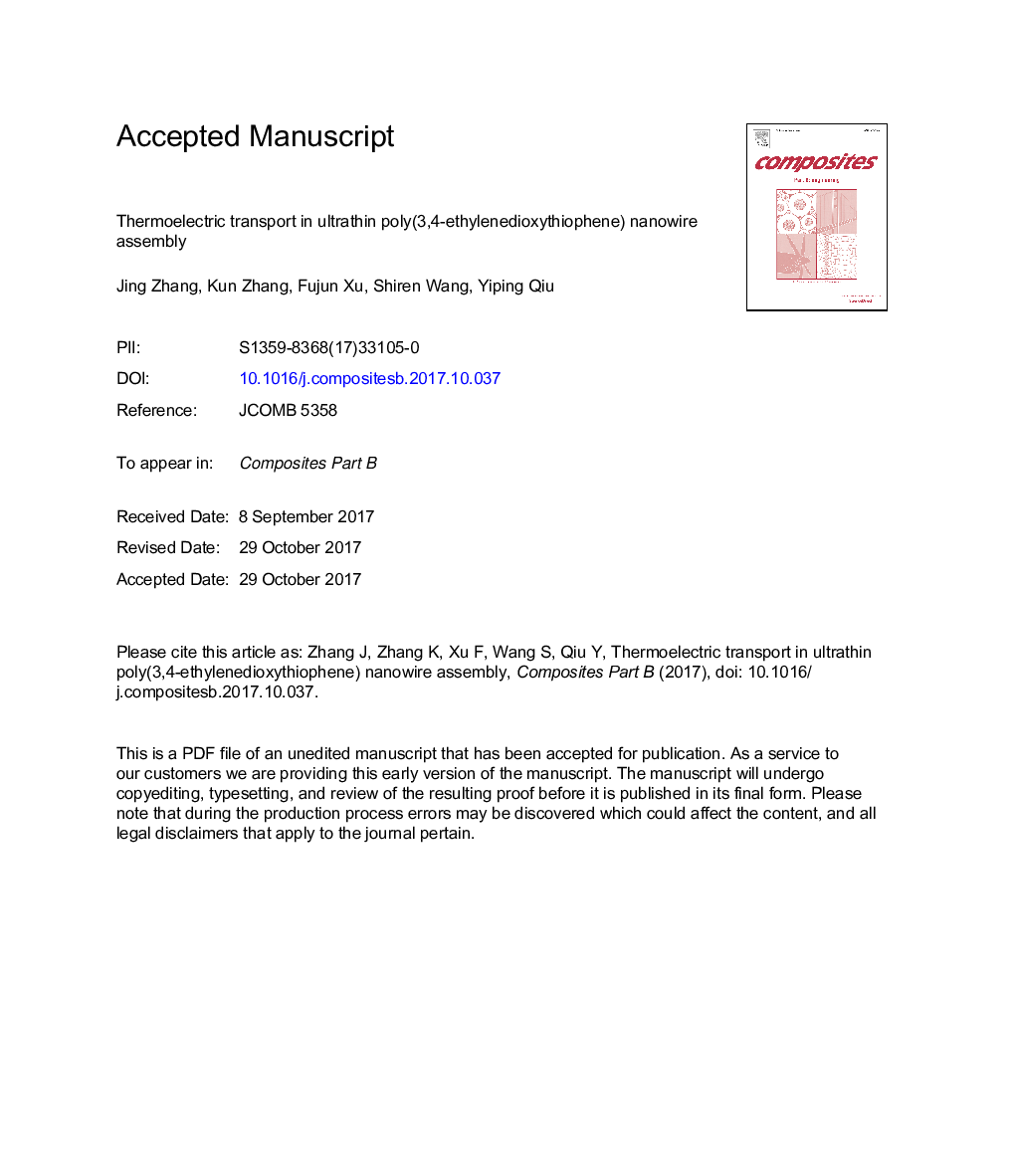| Article ID | Journal | Published Year | Pages | File Type |
|---|---|---|---|---|
| 7212367 | Composites Part B: Engineering | 2018 | 28 Pages |
Abstract
With the highly ordered structure and thus probably fast carrier transport, one-dimensional (1D) conducting polymers are very promising as organic thermoelectric (TE) materials. Many efforts have been made toward the elucidation of TE transport in polymer nanowires assembly; however, the mechanism for the improvement in thermoelectric property is still far from clear. Here, we systematically investigate the TE transport in 12-nanometer-wide poly(3,4-ethylenedioxythiophene) nanowires (PEDOT NWs) assembly. The iron (III) chloride oxidized PEDOT NWs shows high electrical conductivity Ï (â¼540 S/cm), an enhanced Seebeck coefficient S that is 2.6 times of that of poly(3,4-ethylenedioxythiophene):polystyrene sulfonate and tuned power factor (PFâ¼35.8 μW/m·K2). To the best of our knowledge, it outperforms the TE performance of all reported 1D conducing polymers based films. More importantly, we carefully interpret the origin of Ï and S enhancements in PEDOT NWs-based films. The high Ï mainly results from the significant increment of carrier mobility μ, which is mainly due to preferred edge-on orientation and high crystallinity of PEDOT chains. The large S in PEDOT NWs-based films stem from the sharp feature of the density of states at Fermi level.
Keywords
Related Topics
Physical Sciences and Engineering
Engineering
Engineering (General)
Authors
Jing Zhang, Kun Zhang, Fujun Xu, Shiren Wang, Yiping Qiu,
